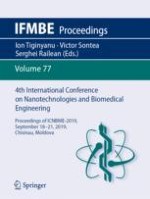2020 | OriginalPaper | Chapter
Mechanical and Morphological Characterization of Decellularized Umbilical Vessels as Tissue Engineering Scaffolds
Authors : T. Malcova, L. Globa, A. Vascan, E. Țugui, A. Stoian, V. Nacu
Published in: 4th International Conference on Nanotechnologies and Biomedical Engineering
Publisher: Springer International Publishing
Activate our intelligent search to find suitable subject content or patents.
Select sections of text to find matching patents with Artificial Intelligence. powered by
Select sections of text to find additional relevant content using AI-assisted search. powered by
